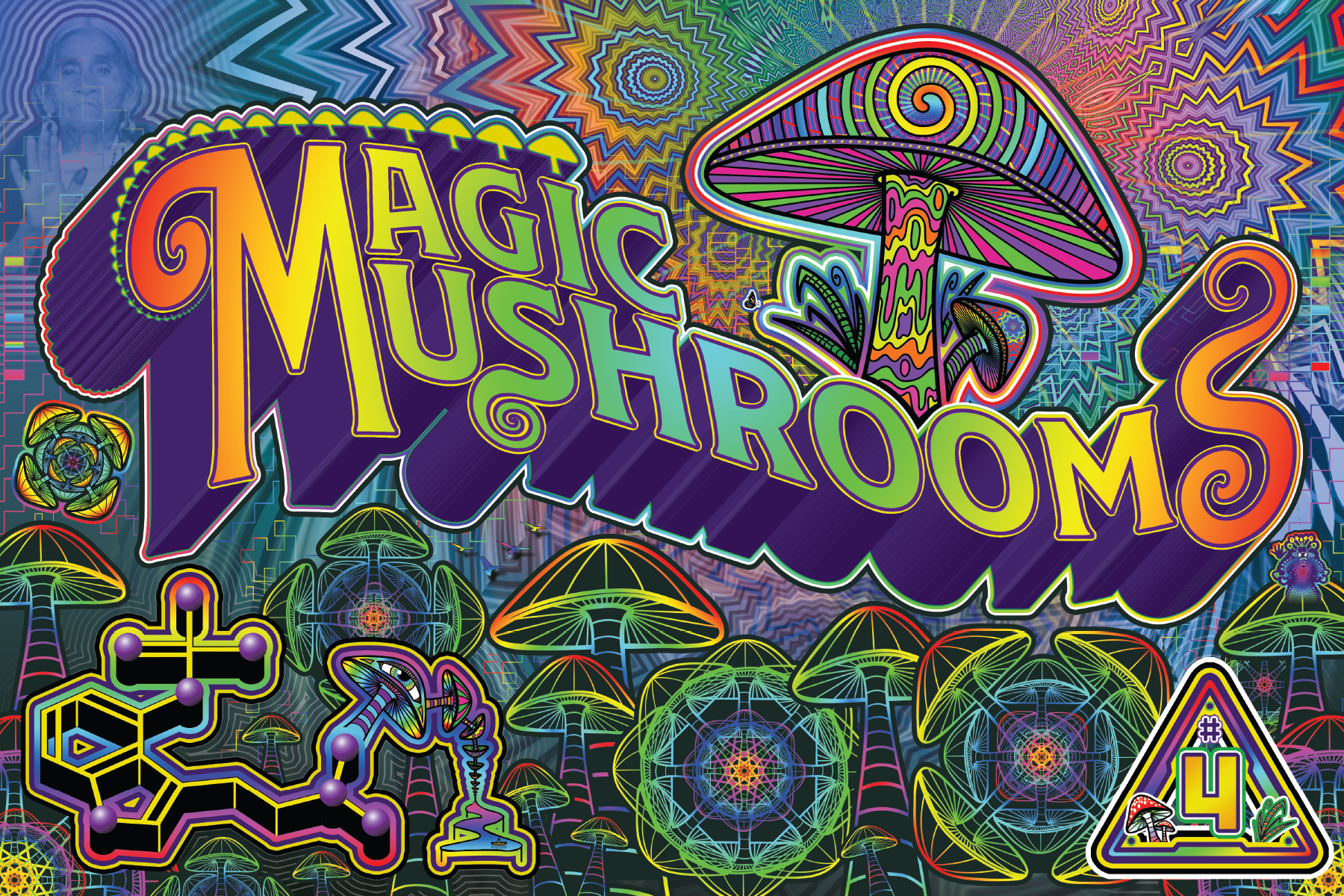
Mushrooms
Post Date: February 10, 2014
Rachel Clark2023-03-28T16:18:55-07:00
Mushrooms
What are magic mushrooms?
- Magic mushrooms (or simply “mushrooms”) are any of a variety of mushrooms that contain psilocybin.
- More specifically, there are many genuses of mushroom that contain psilocybin, and within each genus there are species, and within each species there are varieties. The most common species is “P. Cubensis.”
- An example of this would be the famous Golden Teachers, which are a variety within the P. Cubensis species.
- Recent scientific studies are investigating the efficacy of mushrooms in treating various health conditions, specifically end-of-life anxiety in terminally ill cancer patients, cluster headaches, and chronic depression.
- Mushrooms are usually eaten raw or brewed into tea. They are typically consumed dry, although some people eat them fresh.
- Revered Oaxacan curandera María Sabina introduced the United States to the magic mushroom, a story that became a cautionary tale about greed, exploitation, and poaching.
What are the effects?
- Psilocybin itself isn’t actually psychoactive. When psilocybin is ingested, the body breaks it down into psilocin. The scientific term for this is a “prodrug,” which is an inactive substance that’s broken down into an active substance into the body.
- Other prodrugs include 1,4-B and GBL (broken down into GHB), heroin (broken down into morphine), and ALD-52 and 1P-LSD (broken down into LSD).
- Psilocin is a psychedelic drug that lasts about 4-6 hours. Its effects, though similar to those of LSD, are distinct. Many people report having contact with “entities” and feeling a deep connection to nature.
- The headspace of mushrooms may be somewhat less controllable than that of LSD, and many people report that mushroom trips can be more unpredictable but also more spiritual. A common adage is “LSD puts you in the driver’s seat, mushrooms take you for a ride.”
What is a typical dose?
- The amount of psilocybin in mushrooms can vary greatly between varieties, batches, and individual mushrooms, making it difficult to dose precisely.
- While some people swear that potency can be visually determined by the mushroom’s size or blue bruising on the fruit, these are not foolproof metrics.
- A typical dose of dried mushrooms is about 1.5 to 2.5 g. A threshold dose (one you can just barely feel) is usually around 0.25 g. Doses of 3.5 g or above are generally considered to be strong.
- Dose potency can vary from trip to trip! This can be impacted by the variety, the potencies of the individual mushrooms you’re taking, your stomach contents on that day, and many other factors.
- On an empty stomach, the full effects should be felt within 30 minutes to an hour. On a full stomach it could take much longer.
- Start with a small dose and don’t take more until at least 1.5 hours (or more) has elapsed. Taking more because you “don’t feel it” is an easy way to accidentally trip much harder than you had banked on.
Be careful!
- Accidentally ingesting poisonous mushrooms can be very dangerous. It’s important to triple check that you’ve bought actual psilocybin mushrooms. (Visit the Shroomery website if you need help with identification.)
- As with other psychedelics (and emotionally intense drugs in general), people who have personal or family histories of mood or psychotic disorders may be at increased risk of psychological upset after taking mushrooms.
- Mushroom trips can sometimes be frightening, inducing extreme anxiety and panic. This risk is heightened if you’re taking mushrooms in environments that are crowded, unpredictable, or hectic. Start in a calm, safe space, and talk to someone you trust about your plans before you dose.
- Tripping puts you in a vulnerable state, so it’s important to have plans for caring for yourself during and after a trip. Reading up on the practices of intention setting and integration can help prepare you for your experience.
More harm reduction tips
- Some consumers experience nausea in the first hour after dosing. Making mushroom tea or using a tek like lemon tek may help reduce nausea. (Visit the Shroomery website for guides.)
- Eat a moderate meal two hours before your dose. Tripping on an empty stomach may increase the intensity of the come-up, but can also cause nausea during or after the trip.
- As with all psychedelics, “set” and “setting” are important factors in determining whether someone has a positive or difficult experience. “Set” is a person’s mental state (their thoughts, mood, and expectations), while “setting” is the physical and social environment in which the drug is consumed. Being in a good mental state, with trusted friends in a supportive environment, reduces the risk of having a difficult trip on mushrooms.
- Remember: Even very difficult trips can have a positive effect on your life. Many people report that their hardest trips were the most impactful and influential. Integration is a very important and underrated part of psychedelic experiences.

